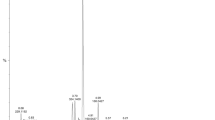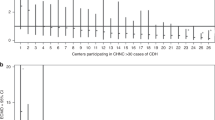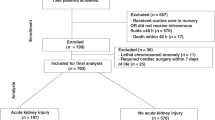Abstract
Background
Cyclohexanone is a volatile organic compound known to be toxic to humans and animals, used in the medical setting as a solvent sealer for intravenous (IV) fluid administration devices. We aimed to determine exposure sources as well as plasma and urine levels of cyclohexanone and metabolites in critically ill infants and children.
Methods
We prospectively enrolled children in a single center pediatric intensive care unit (ICU) (n = 66), and conducted a secondary analysis of a multicenter trial in premature neonates (n = 69). Cyclohexanone and its predominant metabolites, trans-1,2-cyclohexanediol and trans-1,4-cyclohexanediol, were measured serially in medical fluids, plasma, and urine.
Results
Cyclohexanone was detected in all IV solutions used in standard ICU care (IV fluids, medications, dialysate and red blood cell bags, n = 53 fluid samples). Cyclohexanone and metabolites were higher in urine versus plasma in both cohorts. In premature neonates, plasma and urine cyclohexanone concentrations were highest on day of randomization, while metabolite concentrations were highest on days 7–14.
Conclusions
Currently, cyclohexanone may represent an inevitable exposure to children who require intensive care inclusive of IV fluid and medication administration devices. Further studies are needed to develop replacement or mitigation strategies for cyclohexanone exposure in the vulnerable neonatal and pediatric ICU populations.
Impact
-
Direct bloodstream exposure to cyclohexanone in the hospital environment has been poorly described in the healthcare setting.
-
Cyclohexanone was present in all tested types of intravenous solutions used in standard intensive care (intravenous fluids, medications, dialysate and stored red blood cell bags).
-
In a single center pediatric intensive care unit cohort and a multicenter neonatal intensive care unit cohort, cyclohexanone and its metabolites were detected in every blood and urine sample tested.
-
In a multicenter neonatal intensive care unit cohort, plasma and urine cyclohexanone concentrations were highest on day 1 of admission and metabolite concentrations were highest on days 7–14.
This is a preview of subscription content, access via your institution
Access options
Subscribe to this journal
Receive 14 print issues and online access
$259.00 per year
only $18.50 per issue
Buy this article
- Purchase on SpringerLink
- Instant access to full article PDF
Prices may be subject to local taxes which are calculated during checkout


Similar content being viewed by others
Data availability
The datasets generated during and/or analysed during the current study are not publicly available due to grant period still ongoing but are available from the corresponding author on reasonable request.
References
U.S. Environmental Protection Agency (EPA). Comptox chemicals dashboard V2.4.1. 376 https://comptox.epa.gov/dashboard/chemical/details/DTXSID6020359. Accessed on: March 10, 377.
IARC Working Group on the Evaluation of Carcinogenic Risks to Humans. Some organic 379 solvents, resin monomers and related compounds, pigments and occupational exposures in paint 380 manufacture and painting. Lyon, France: International Agency for Research on Cancer.
Jarsky, A. Elcam stopcocks: Solvent tube bonding. Elcam Medical. Revision 2, February 382 2014. https://www.yumpu.com/en/document/read/37373371/solvent-tube-bonding-elcam-383 medical. Accessed January 2, 2023.
Danielson, J. W. Capillary gas chromatographic determination of cyclohexanone and 2-ethyl-1-385 hexanol leached from solution administration sets. J. Assoc. Anal. Chem. 74, 476–478 (1991).
Story, D. A., Leeder, J., Cullis, P. & Bellomo, R. Biologically active contaminants of intravenous 387 saline in PVC packaging: Australasian, European, and North American samples. Anaesth. Intensive Care 33, 78–81 (2005).
Snell, R. P. Gas chromatographic determination of cyclohexanone leached from hemodialysis 390 tubing. J. AOAC Int 76, 1127–1132 (1993).
Ulsaker, G. A. & Korsnes, R. M. Determination of cyclohexanone in intravenous solutions stored in 392 PVC bags by gas chromatography. Analyst 102, 882–883 (1977).
Thompson-Torgerson, C. S., Champion, H. C., Santhanam, L., Harris, Z. L. & Shoukas, A. A. Cyclohexanone contamination from extracorporeal circuits impairs cardiovascular function. Am. J. Physiol. Heart Circ. Physiol. 296, 1926 (2009).
Prazad, P., Donovan, R., Won, B. & Cortes, D. Migration of cyclohexanone and 3,3,5-397 trimethylcyclohexanone from a neonatal enteral feeding system into human milk. J. Perinatol. 41, 1074–1082 (2021).
Colareta Ugarte, U. et al. Emission of volatile organic compounds 400 from medical equipment inside neonatal incubators. J. Perinatol. 34, 624–628 (2014).
Mills, G. A. & Walker, V. Urinary excretion of cyclohexanediol, a metabolite of the solvent 402 cyclohexanone, by infants in a special care unit. Clin. Chem. 36, 870–874 (1990).
Gupta, P. K., Lawrence, W. H., Turner, J. E. & Autian, J. Toxicological aspects of cyclohexanone. 404 Toxicol. Appl. Pharm. 49, 525–533 (1979).
Martis, L, Tolhurst, T, Koeferl, M T, Miller, T R & Darby, T D Disposition kinetics of 406 cyclohexanone in beagle dogs. Toxicol. Appl. Pharm. 55, 545–553 (1980).
Koeferl, M.T. et al. Influence of 408 concentration and rate of intravenous administration on the toxicity of cyclohexanone in beagle 409 dogs. Toxicol. Appl Pharm. 59, 215–229 (1981).
Mraz, J., Galova, E., Nohova, H. & Vitkova, D. Uptake, metabolism and elimination of 421 cyclohexanone in humans. Int Arch. Occup. Environ. Health 66, 203–208 (1994).
Centers for Disease Control and Prevention, The National Institute for Occupational Safety 411 and Health. Cyclohexanone. https://www.cdc.gov/niosh/npg/npgd0163.html. Updated 2019. 412 Accessed June 4, 2020.
Everett, A. D. et al. Association of neurodevelopmental outcomes with 414 environmental exposure to cyclohexanone during neonatal congenital cardiac operations: A 415 secondary analysis of a randomized clinical trial. JAMA Netw. Open 3, e204070 (2020).
Bembea, M. M. et al. Cyclohexanone exposure in children on 417 extracorporeal membrane oxygenation support. ASAIO J. 68, 419–425 (2022).
Juul, S. E. et al. A randomized trial of erythropoietin for 419 neuroprotection in preterm infants. N. Engl. J. Med. 382, 233–243 (2020).
Mráz, J., Gálová, E., Nohová, H. & Vitková, D. 1,2- and 1,4-cyclohexanediol: Major urinary 460 metabolites and biomarkers of exposure to cyclohexane, cyclohexanone, and cyclohexanol in 461 humans. Int Arch. Occup. Environ. Health 71, 560–565 (1998).
Leteurtre, S. et al. Groupe Francophone de Réanimation et d’Urgences Pédiatriques (GFRUP). PELOD-2: an update of the PEdiatric logistic organ dysfunction score. Crit. Care Med. 41, 1761–1773 (2013).
Diciccio, T. & Tibshirani, R. Bootstrap Confidence Intervals and Bootstrap Approximations. J. Am. Stat. Assoc. 82, 163–170 (1987).
Pazzaglia, M., Tullo, S., Voudouris, S. & Tosti, A. Contact dermatitis due to cyclohexanone: A 423 further case. Contact Dermat. 49, 313–1873 (2003).
Sanmartin, O. & de la Cuadra, J. Occupational contact dermatitis from cyclohexanone as a PVC 425 adhesive. Contact Dermat. 27, 189–190 (1992).
Mutti, A. et al. Absorption and alveolar 427 excretion of cyclohexane in workers in a shoe factory. J. Appl Toxicol. 1 220–223 (1981).
Paciencia, I. et al. Exposure to indoor endocrine-disrupting 429 chemicals and childhood asthma and obesity. Allergy 74, 1277–1291 (2019).
Api A.M., et al. RIFM fragrance ingredient safety assessment, cyclohexanone, CAS registry number 108-94-1. Food Chem. Toxicol. 138, 111231 (2020).
Wiedmer, C. & Buettner, A. Identification and characterisation of odorants in a squishy toy using 433 gas chromatography-mass spectrometry/olfactometry after thermal extraction. Anal. Bioanal. Chem. 411, 3757–3761 (2019).
Wiedmer, C., Velasco-Schon, C. & Buettner, A. Characterization of odorants in inflatable aquatic 436 toys and swimming learning devices-which substances are causative for the characteristic odor 437 and potentially harmful?. Anal. Bioanal. Chem. 409, 3905–3916 (2017).
Liu, Y. et al. Nontargeted analysis and comparison strategies for volatile and semivolatile substances in toys made of different materials. Chemosphere. 342, 140170 (2023)
Wiedmer, C. & Buettner, A. Quantification of organic solvents in aquatic toys and swimming 442 learning devices and evaluation of their influence on the smell properties of the corresponding 443 products. Anal. Bioanal. Chem. 410(10), 2585–2595 (2018).
Gui, X. et al. Identification and validation of volatile organic compounds in 445 bile for differential diagnosis of perihilar cholangiocarcinoma. Clin. Chim. Acta.541, (2023).
Felton, T. W. et al. Analysis of exhaled breath to identify critically ill 448 patients with ventilator-associated pneumonia. Anaesthesia 78, 712–721 (2023).
Rogosch, T. et al. Detection of bloodstream infections and prediction 450 of bronchopulmonary dysplasia in preterm neonates with an electronic nose. J. Pediatr. 165, 622–624 (2014).
de Meij, T. G. J. et al. Early detection of necrotizing 453 enterocolitis by fecal volatile organic compounds analysis. J. Pediatr. 167, 562–7.e1 (2015).
Wright, H., Bannaga, A. S., Iriarte, R., Mahmoud, M. & Arasaradnam, R. P. Utility of volatile organic 455 compounds as a diagnostic tool in preterm infants. Pediatr. Res. 89, 263–268 (2021).
Mochalski, P. et al. Blood and breath profiles 457 of volatile organic compounds in patients with end-stage renal disease. BMC Nephrol. 15, 43–43 (2014).
Perico, A., Cassinelli, C., Brugnone, F., Bavazzano, P. & Perbellini, L. Biological monitoring of 463 occupational exposure to cyclohexane by urinary 1,2- and 1,4-cyclohexanediol determination. Int. Arch. Occup. Environ. Health 72, 115–120 (1999).
Okunishi, H., Shimoura, K., Wang, D. Q. & Kakizoe, E. Cardiotoxic interaction of metabolites from a prodrug segment cilexetil (cyclohexyloxy-carbonyloxy-ethyl) with digoxin in the canine failing heart. Pharm. Res. 46, 301–310 (2002).
El-Metwally, D. et al. Urinary metabolites of volatile organic 466 compounds of infants in the neonatal intensive care unit. Pediatr. Res. 83, 1158–1164 (2018).
Course C. et al. Volatile organic 468 compounds as disease predictors in newborn infants: A systematic review. J. Breath Res. 15, https://doi.org/10.1088/1752-7163/abe283 (2021).
Funding
Support for this work included funding from the National Heart Lung and Blood Institute under award R01HL158593 (ADE and DG) and the National Institute of Neurological Disorders and Stroke of the National Institutes of Health under Award R01NS106292 (MMB).
Author information
Authors and Affiliations
Contributions
M.M.B. and A.D.E. conceived and designed the study. S.D., E.Z., C.F.S., D.G., M.G., K.S., A.D.E., and M.M.B. all contributed to the acquisition of data. J.K. provided statistical analysis. S.D., E.Z., J.K. and M.M.B. drafted the article while all authors contributed to interpretation of data and the revision and final approval of the manuscript.
Corresponding author
Ethics declarations
Competing interests
The authors declare no competing interests.
Consent statement
Written informed consent was obtained from parents or legal guardians within 48 h of pediatric intensive care unit admission for the pediatric cohort and within 24 h of birth for the PENUT cohort.
Additional information
Publisher’s note Springer Nature remains neutral with regard to jurisdictional claims in published maps and institutional affiliations.
Supplementary information
Rights and permissions
Springer Nature or its licensor (e.g. a society or other partner) holds exclusive rights to this article under a publishing agreement with the author(s) or other rightsholder(s); author self-archiving of the accepted manuscript version of this article is solely governed by the terms of such publishing agreement and applicable law.
About this article
Cite this article
Desiraju, S., Zhao, E., Kuiper, J. et al. Cyclohexanone and metabolites exposure in critically Ill neonates and children. Pediatr Res (2025). https://doi.org/10.1038/s41390-025-04027-8
Received:
Revised:
Accepted:
Published:
DOI: https://doi.org/10.1038/s41390-025-04027-8



